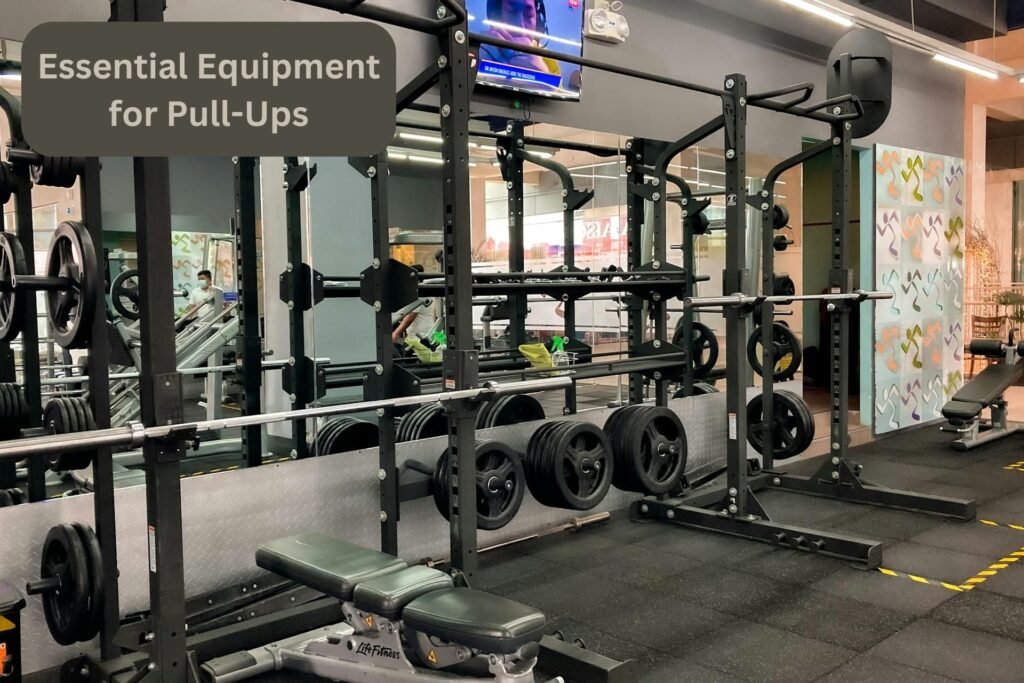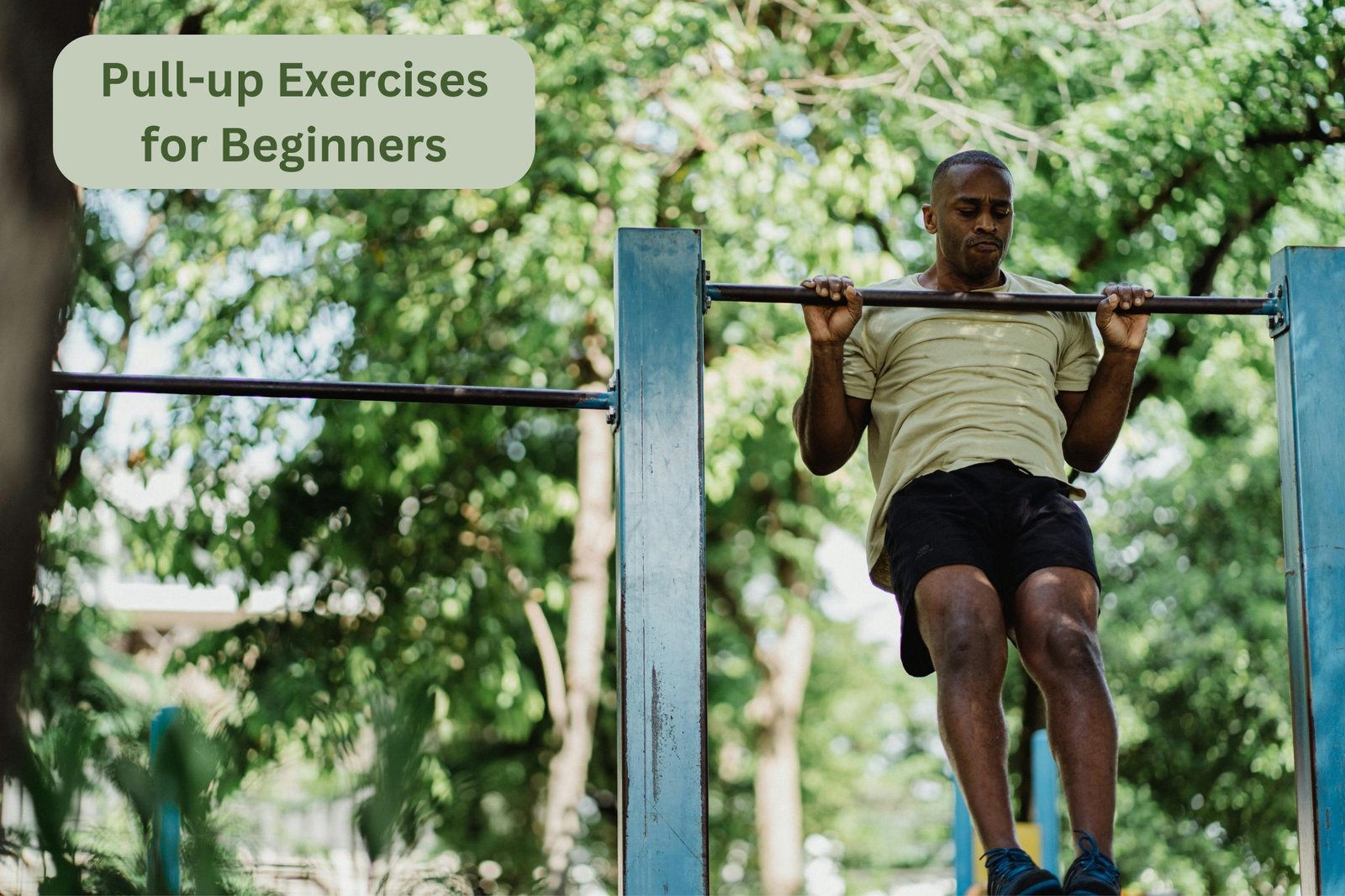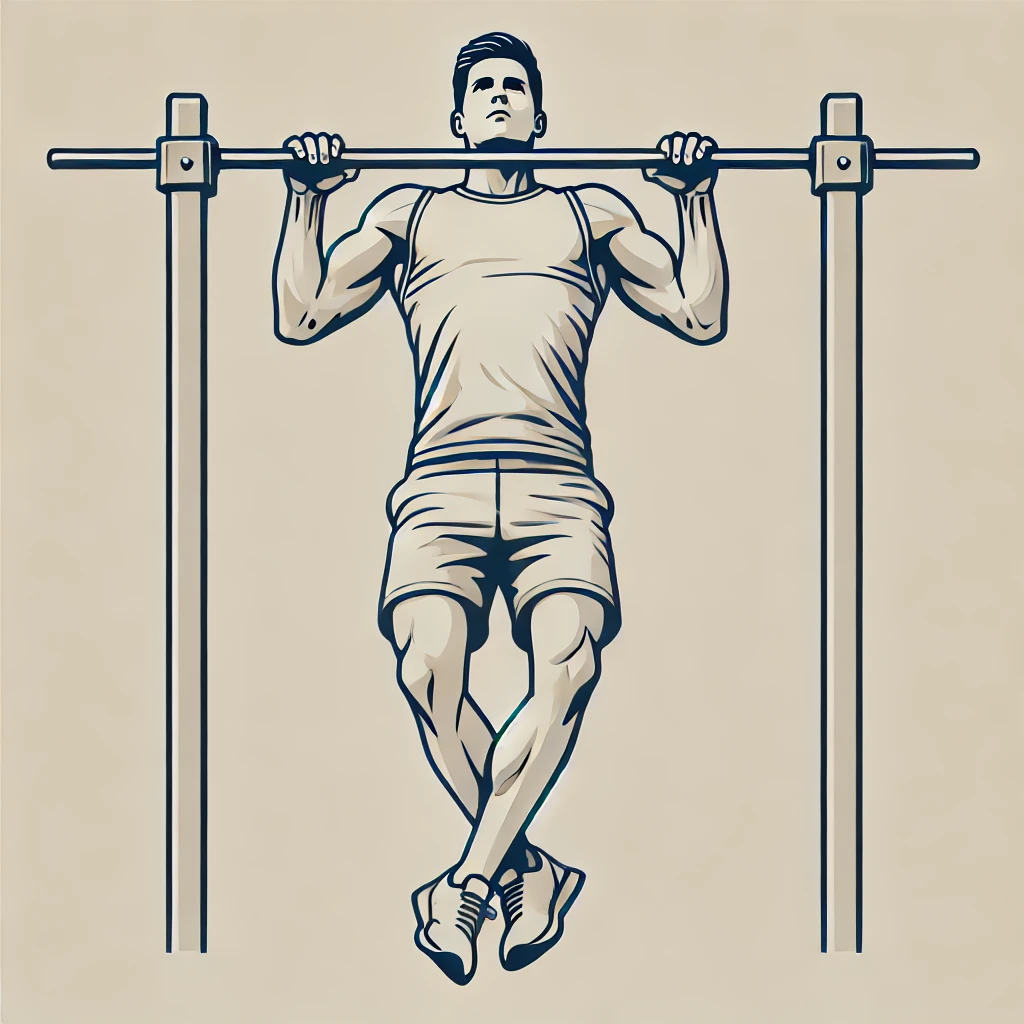Are you struggling to master pull-up exercises for beginners but don’t know where to start?
I’ve been there, feeling nervous about grabbing the pull-up bar and just hanging there like a dead weight.
But trust me, every journey begins with that first pull.
This guide is here to help you transform those jitters into gains.
Why Are Pull-Up Exercises Crucial for Beginners?
Pull-up exercises are one of the most effective ways to build upper body strength. They work multiple muscles at once—like the back, shoulders, and arms. And guess what? They also help improve your grip pull-up strength.
Benefits You Can Expect
- Increase in Muscle Strength: Pull-ups target major muscle groups.
- Functional Fitness: Helps in daily activities involving pushing and pulling.
- Improved Posture: Strengthening your back muscles aids in better posture.
- Convenient: Needs minimal equipment, making it perfect for home workouts.
Starting strong doesn’t mean you need to be a superhero fit from day one. You’ll get there.
Starting Point: Assess Your Fitness Level
Before you go all in, it’s essential to know where you stand. No two fitness journeys are the same.
Fitness Level Assessment
You don’t need to run a marathon to assess your fitness. A couple of simple checks will do the trick.
- Grip Strength Test: Grab something heavy like a gallon of milk. Hold it for as long as you can.
- Arm Strength: Can you manage a couple of push-ups?
- Cardio Check: How’s your stamina? Can you walk a mile without puffing like a steam engine?
Make a note of your results. This will help in tracking your progress.
Essential Equipment for Pull-Ups
You don’t need a full gym set-up to get started. Simple and cost-effective equipment will do.

Basic Equipment
- Pull-Up Bar: An essential piece.
- Resistance Bands: Ideal for assisted pull-ups.
- Grip Pads: To avoid calluses.
Having these ready helps in making incremental gains.
The Anatomy of a Pull-Up
Knowing the mechanics helps you understand what you’re doing. Let’s break it down.
Key Muscle Groups Involved
- Latissimus Dorsi: The major back muscle.
- Biceps: For the pulling action.
- Trapezius: Stabilizes your shoulders.
- Forearms and Grip: To hold onto the bar.
Steps to Perform a Pull-Up
- Start with the Right Grip: Grab the bar, palms facing away from you, shoulder-width apart.
- Engage Core: Tighten your abdominal muscles.
- Pull Up: Use your arms and back to lift your chin above the bar.
- Lower Gently: Come down slowly to avoid injury.
Consistency with this form is key.
Progression is Key: From Zero to One Pull-Up
You might think it’s impossible now, but you can progress from zero to your first pull-up. Here’s how.
Step-by-Step Progression Plan
- Week 1-2: Focus on grip strength. Hang from the bar for as long as you can.
- Week 3-4: Start with assisted pull-ups using resistance bands.
- Week 5-6: Work on negative pull-ups. Jump to the top position and slowly lower yourself.
Write down your achievements week by week. It feels amazing to see how far you’ve come.
Alternative Exercises to Build Strength
You don’t always need to head straight for the pull-up bar. Alternative exercises can help build the muscles you need.
Useful Alternatives
- Body Rows: Use a low bar. Pull your chest towards it.
- Dumbbell Rows: Mimics the pulling action.
- Lat Pull-Downs: Great if you have access to a gym.
- Chin-Ups: Easier than pull-ups, and a good start.
Incorporate these into your routine for balanced improvement.
Common Mistakes and How to Avoid Them
When performing pull-up exercises for beginners, everyone makes mistakes, but avoiding common pitfalls can expedite your progress.
Common Mistakes
- Swinging: Using momentum rather than muscle.
- Rushing: Performing too quickly increases injury risk.
- Wrong Grip: Different grips target different muscles.
Awareness is the first step in preventing these.
Pull-Up Variations to Keep It Interesting
Doing the same routine can get monotonous. Spice it up with variations.
Exciting Pull-Up Variations
- Wide-Grip Pull-Ups: For a broader back.
- Close-Grip Chin-Ups: Targets the biceps more.
- L-Sit Pull-Ups: Adds core workout into the mix.
- Commando Pull-Ups: Hold the bar in a vertical grip.
Being playful with your workout can keep your motivation high.
Check out the video below for more information on pull ups progression.
FAQs on Pull-Up Exercises for Beginners
How Many Pull-Ups Should a Beginner Aim for Initially?
Start small. Even one or two pull-ups is progress. Aim for incremental gains.
How Often Should I Practice Pull-Ups?
Three times a week with rest days in between is optimal to allow muscle recovery.
Is It Normal to Feel Sore After Pull-Ups?
Absolutely. Soreness means your muscles are working. Just ensure you’re not feeling sharp pain, which could indicate an injury.
Can Women Do Pull-Ups?
Definitely. Everyone can benefit from pull-ups, regardless of gender.
How Long Does It Take to Master Pull-Ups?
This varies. Some pick it up in weeks, others take months. Consistency is crucial.
Conclusion
Mastering pull-up exercises for beginners might seem daunting initially.
But with the right approach, steady progress, and avoiding mistakes, you’ll see impressive gains faster than you think.
Remember, incremental progress is still progress. Stick to your plan, and you’ll be pulling yourself up to new heights in no time.
And yes, mastering pull-up exercises for beginners is truly within your grasp.
To dive deeper into the specifics of pull-up form and common mistakes, refer to this detailed guide from Livestrong.


